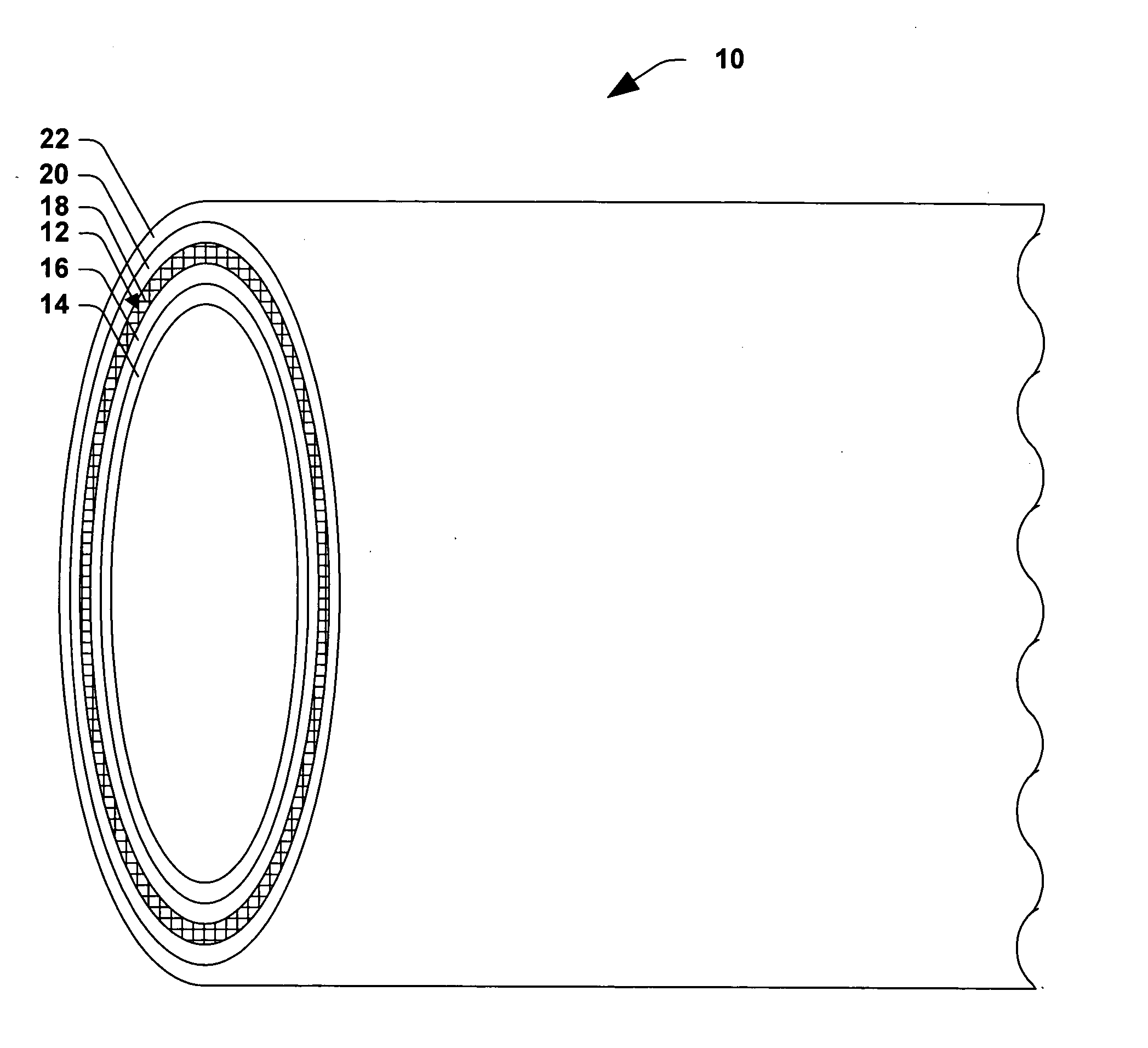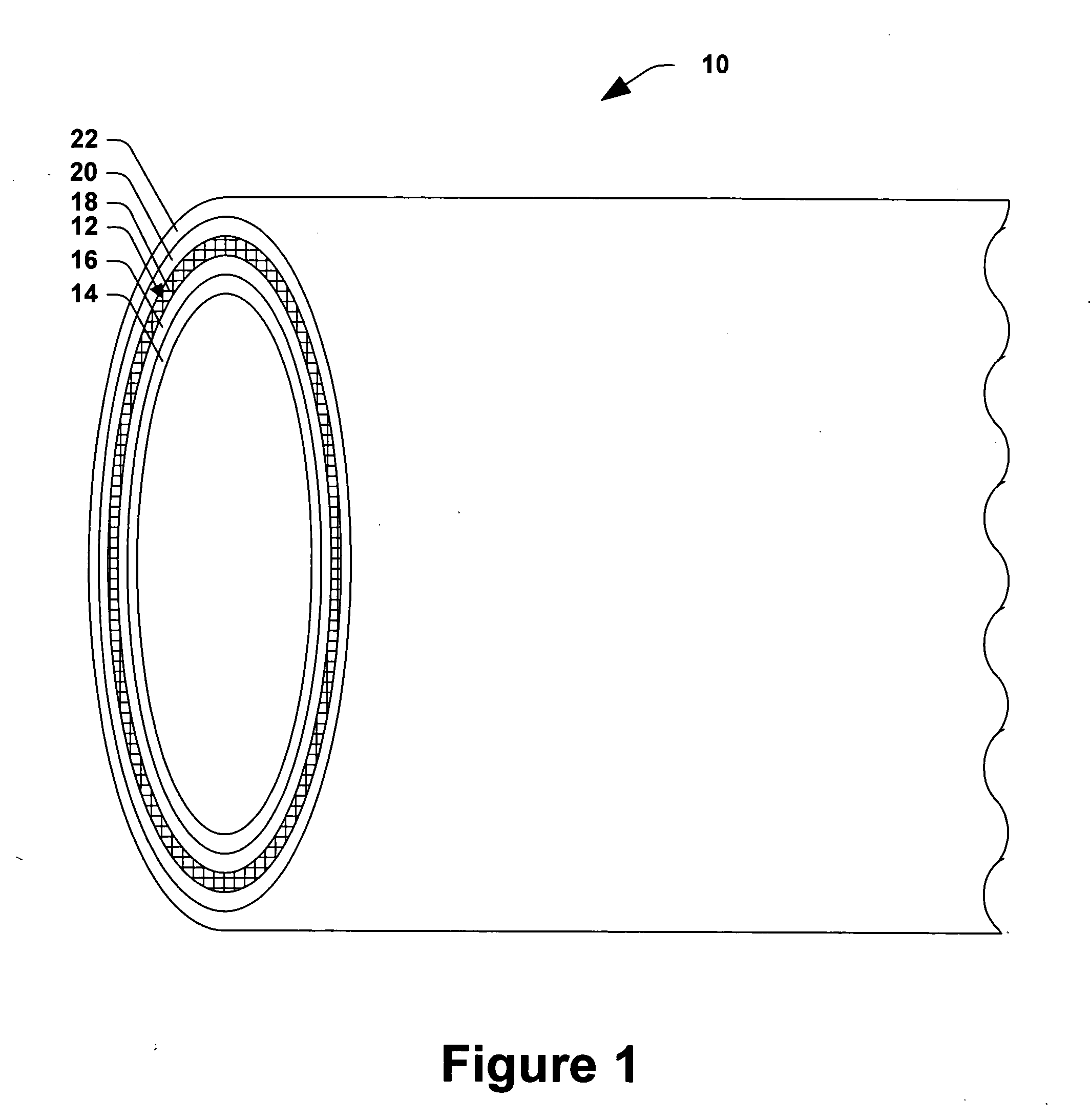Vascular grafts with amphiphilic block copolymer coatings
a vascular graft and amphiphilic block technology, applied in the field of medicine, can solve the problems of thrombosis, difficult to use artificial vascular grafts, and difficulty in ensuring the safety of vascular grafts, so as to reduce stenosis and thrombosis, increase the loading of drugs, and enhance the effect of treatmen
- Summary
- Abstract
- Description
- Claims
- Application Information
AI Technical Summary
Benefits of technology
Problems solved by technology
Method used
Image
Examples
Embodiment Construction
[0021] An exemplary graft according to the invention includes a wall forming a lumen, an amphiphilic block copolymer coating a surface of the wall, and a drug carried by the polymer. The drug is of a type and is provided in an effective amount to significantly inhibit one or more of stenosis, vascular narrowing, and thrombosis. For purposes of this disclosure, stenosis encompasses vascular narrowing and restenosis and to inhibit means to slow the rate or reduce the occurrence of.
[0022] A graft of the present invention provides a versatile platform for on-graft drug delivery. The amphiphilic block copolymer can be stable and flexible, whereby it retains its integrity during and after installation. The polymer can have a high degree of bio- and hemo-compatibility and can carry virtually any drug that might be of interest in connection with grafts, including virtually any drug that is potentially useful in preventing graft stenosis or thrombosis. Release rates can be controlled as nee...
PUM
| Property | Measurement | Unit |
|---|---|---|
| Fraction | aaaaa | aaaaa |
| Time | aaaaa | aaaaa |
| Time | aaaaa | aaaaa |
Abstract
Description
Claims
Application Information
 Login to View More
Login to View More - R&D
- Intellectual Property
- Life Sciences
- Materials
- Tech Scout
- Unparalleled Data Quality
- Higher Quality Content
- 60% Fewer Hallucinations
Browse by: Latest US Patents, China's latest patents, Technical Efficacy Thesaurus, Application Domain, Technology Topic, Popular Technical Reports.
© 2025 PatSnap. All rights reserved.Legal|Privacy policy|Modern Slavery Act Transparency Statement|Sitemap|About US| Contact US: help@patsnap.com


